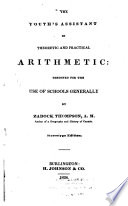 | Zadock Thompson - Arithmetic - 1838 - 174 pages
...of the last term by the ratio. Hence, II. The first and last term and ratio given to find the turn of the series. RULE.— .Multiply the last term by...ratio, and from the product .subtract the first term, the remainder divided by t heratio, less 1, will give the sum of the series. 2. The first term of a... | |
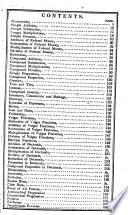 | Arithmetic - 1838 - 218 pages
...and so on, what was the price of the last ? Ans. $171798691,84. CASE 2. The extremes and ratio being given, to find the sum of the series. RULE. — Multiply the last term by the ratio, from the product subtract the first term, and divide the remainder by the ratio less I, the quotient... | |
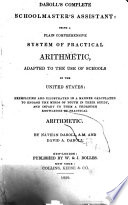 | Nathan Daboll - 1839 - 220 pages
...x 4th power— 8th power, and 256x16-4096; the I2th power, and 40S6 x S= 12288, anbefore. CASE II. The first term, the last term, (or the extremes,)...series. RULE. Multiply the last term by the ratio ; from the product subtract the first term, and divide the remainder by the ratio, loss 1, and the... | |
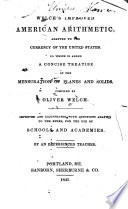 | Arithmetic - 1841 - 200 pages
...answer. CASE II. Given the first term, the last term, and the ratio, to find the aggregate or total sum of the series. RULE. — (') Multiply the last...ratio, and from the product subtract the first term, and the remainder, di# If the ratio had been 3, 4, or 5, &c. you must have multiplied by it. vided... | |
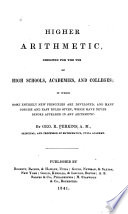 | George Roberts Perkins - Arithmetic - 1841 - 274 pages
...given the sum of all the terms, the List term, and the ratio, to find the first term, we have this RULE. Multiply the last term by the ratio, and from the product subtract the product of the sum of all the terms into the ratio, less one. Examples. 1. The sum of all the terms... | |
 | Osman Call - Arithmetic - 1842 - 210 pages
...infinite series £, ^\, ^-, &c. ? 4. What is the sum of the infinite series ,1, 01, 001, &c.T Ans. J. THE EXTREMES AND THE RATIO GIVEN, TO FIND THE SUM OF THE SERIES. RULE. — Divide the difference of the extremes by the ratio less 1, add the greater extreme to the quotient,... | |
 | Nathan Daboll - 1843 - 260 pages
...by the multiplier 2; and 27, 9, 3, 1. decrease by the divisor 3. PROBLEM I. The first term, the laat term (or the extremes) and the ratio given, to find...Multiply the last term by the ratio, and from the pro duct subtract the first term ; tiien divide the remainder by the ratio, Jess by 1,antl the quotient... | |
 | Nathan Daboll - Arithmetic - 1843 - 254 pages
...the leading powers of the ratio, must always be 1 less than the number of the terms sought. CASE II. The first term, the last term, (or the extremes,)...and the ratio given, to find the sum of the series. BULB. Multiply the last term by the ratio ; from the product subtract the first term, and divide the... | |
 | Horatio Nelson Robinson - Arithmetic - 1845 - 310 pages
...and we have the sum of the series. Hence, to find the sum of a series, we have the following RULE 2. Multiply the last term by the ratio; and from, the...term : then divide the remainder by the ratio less one. When the extreme terms, and number of terms, are given to find the ratio, the reverse of Rule... | |
 | Horatio Nelson Robinson - Algebra - 1846 - 276 pages
...t-Lr~". (2) r — 1 Equation (2), put in words, gives the following rule for the sum of a geometrical series: RULE. Multiply the last term by the ratio, and from the , product subtract the first term, and divide the remainder by the ratio less one. EXAMPLES FOR THE APPLICATION OP EQUATIONS (1) AND (2).... | |
| |